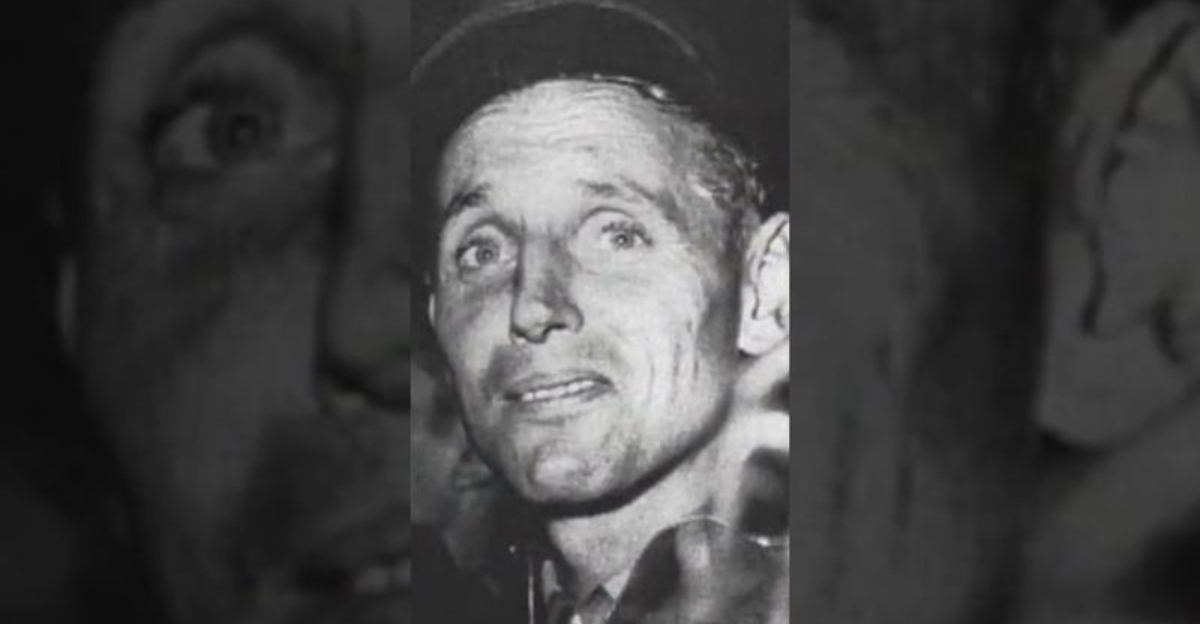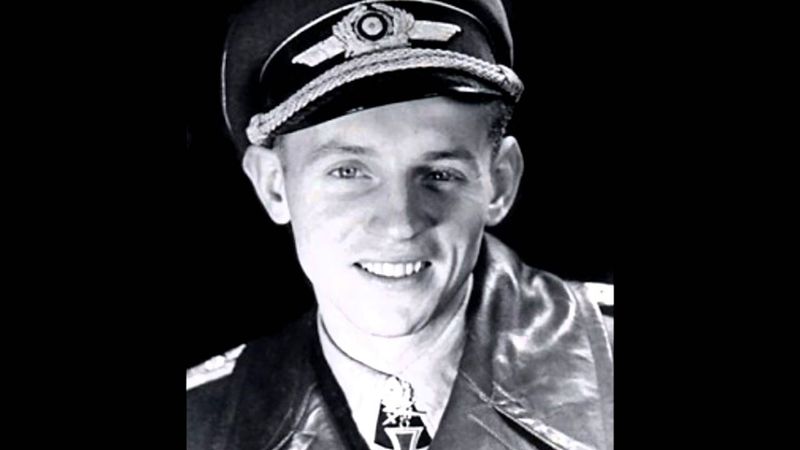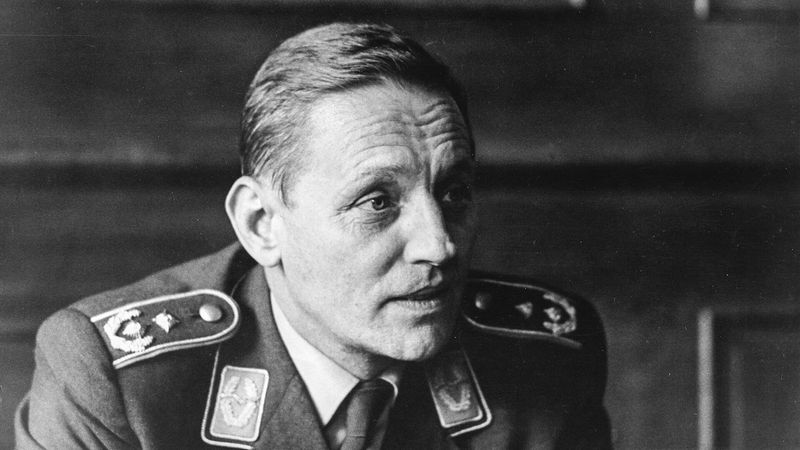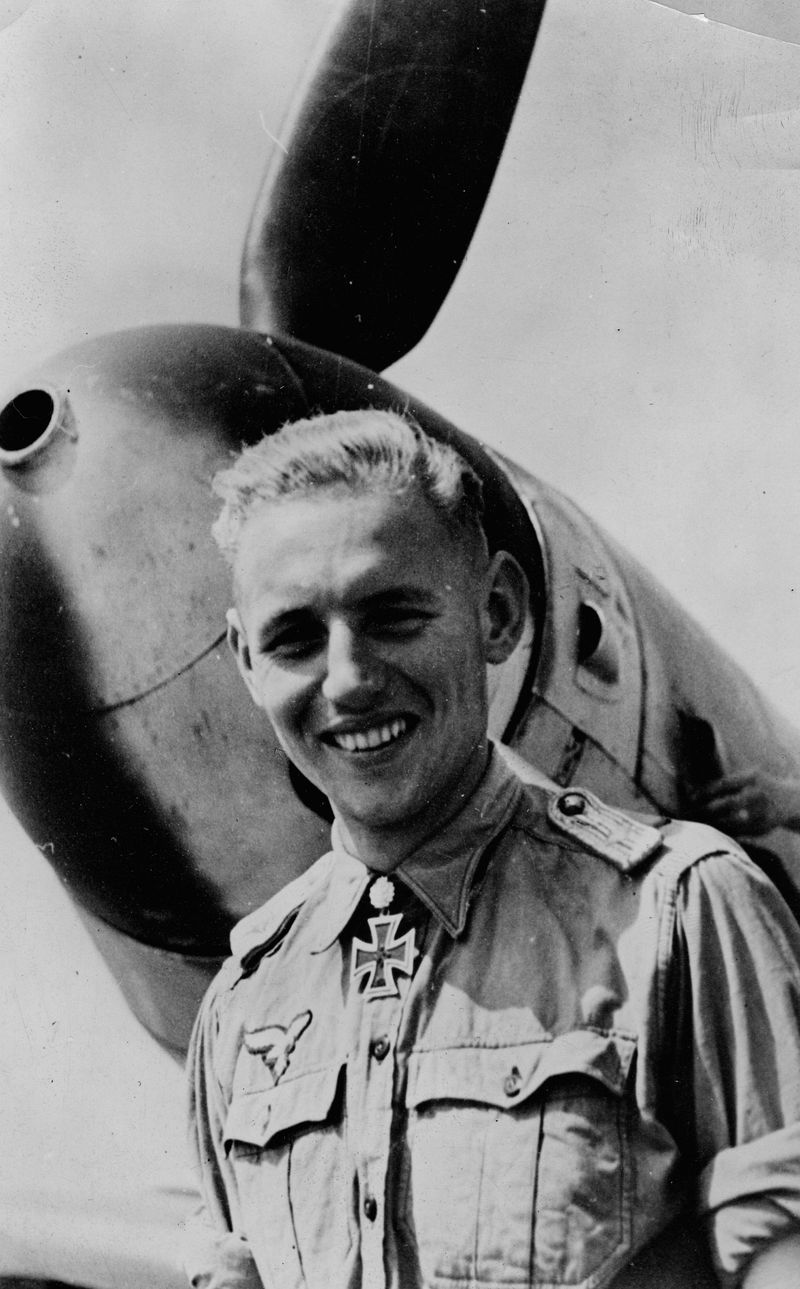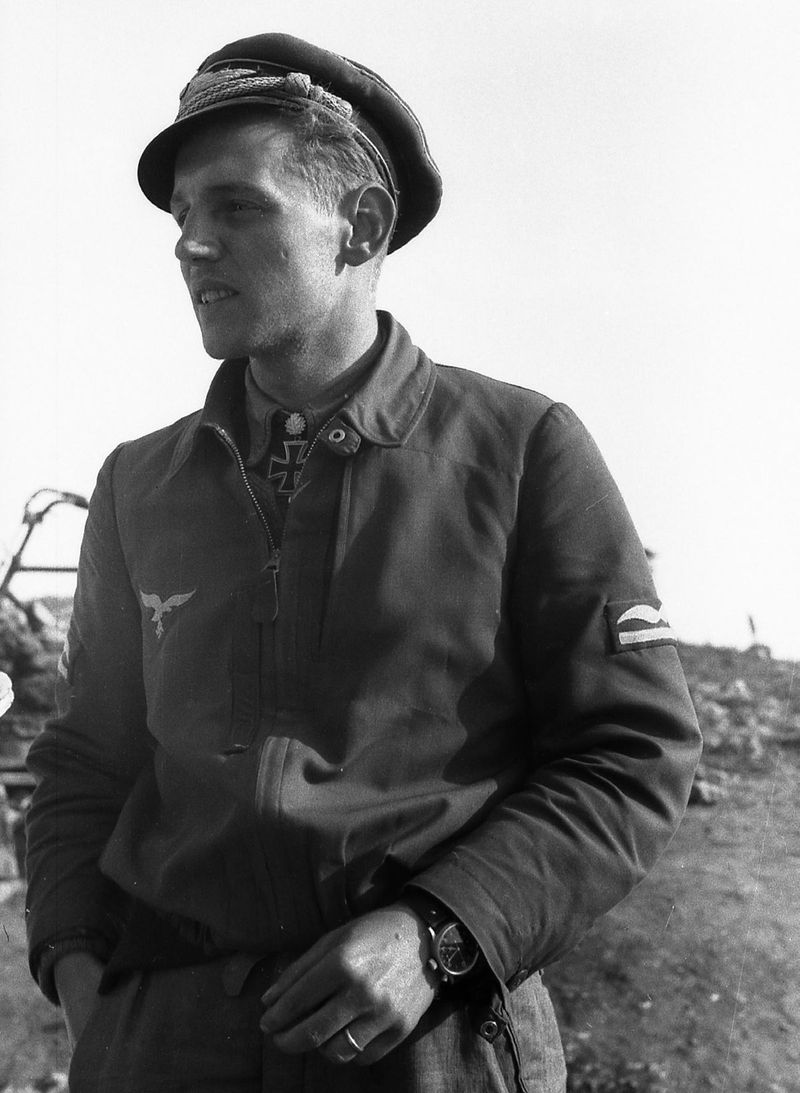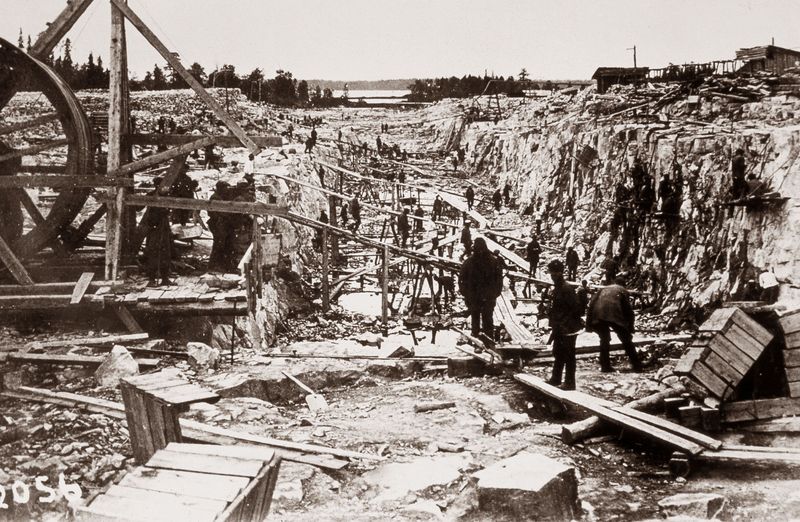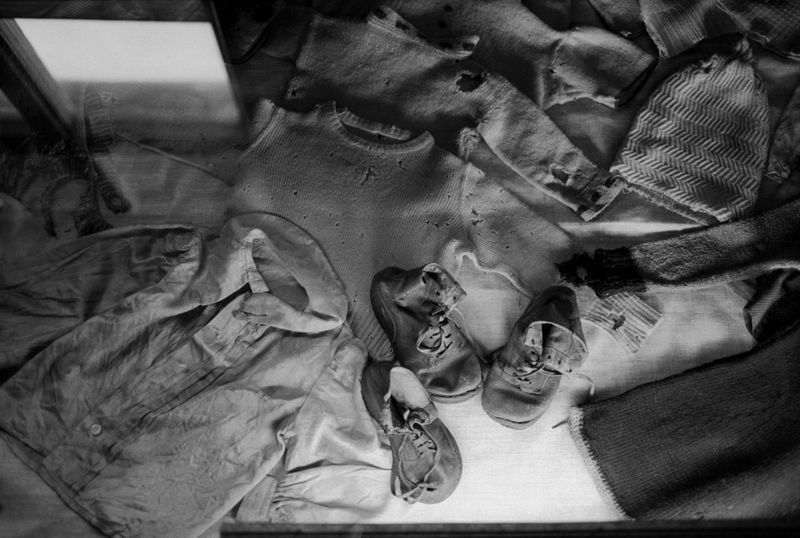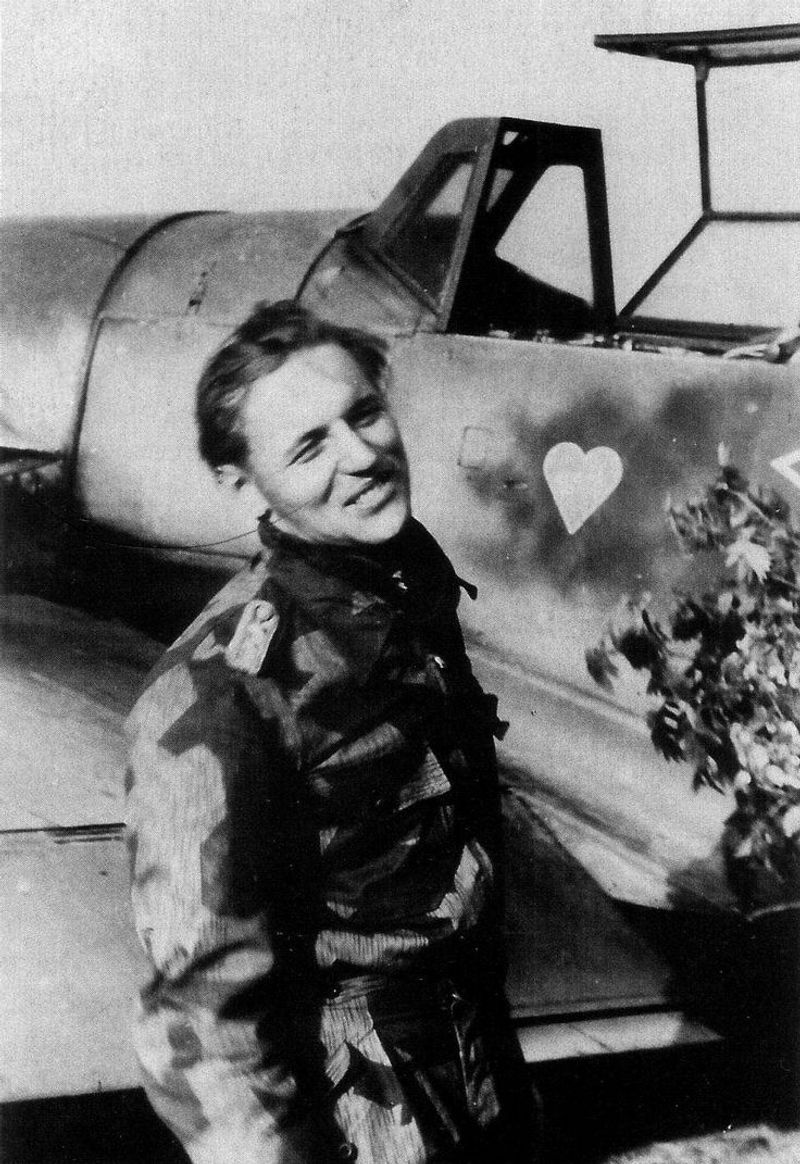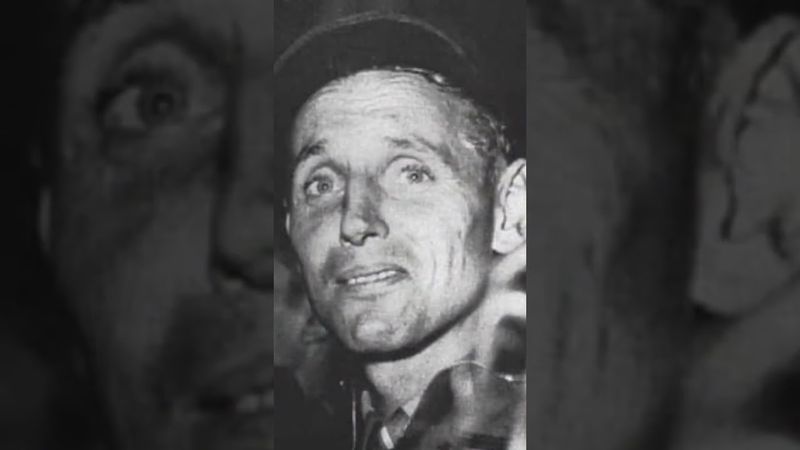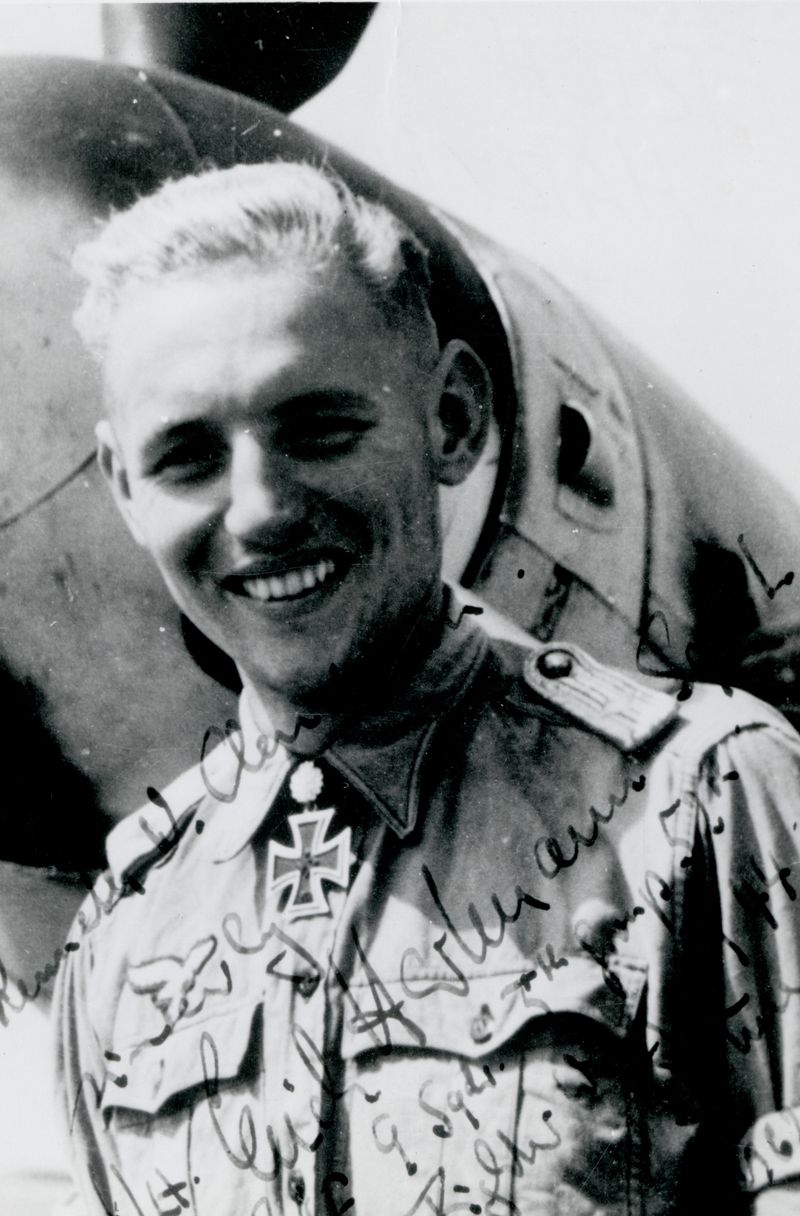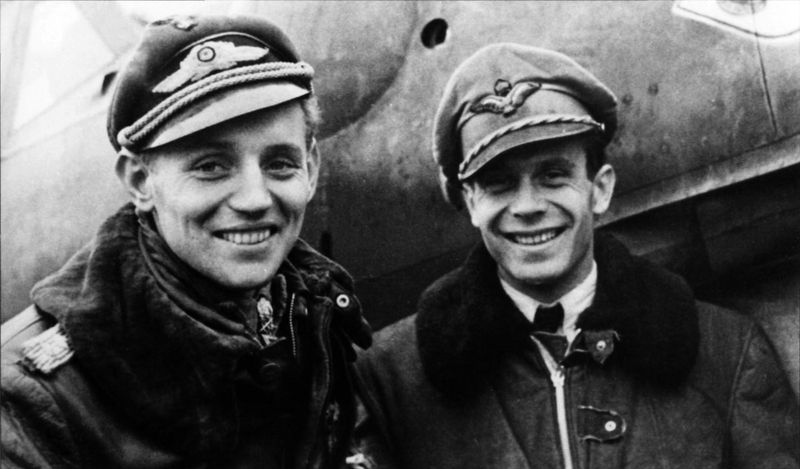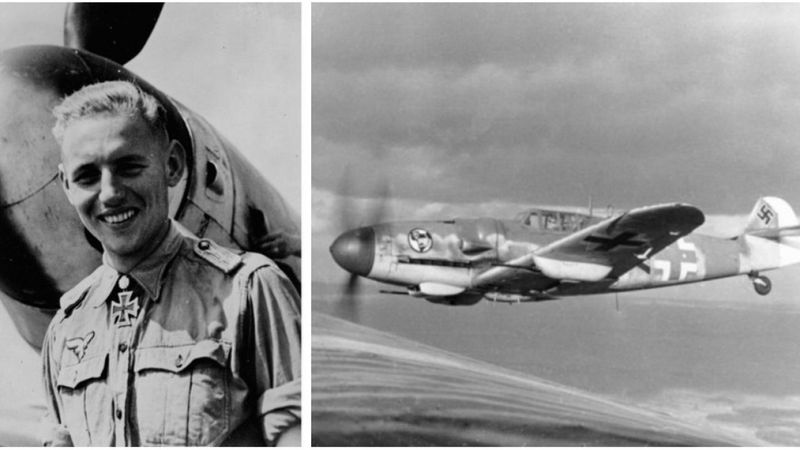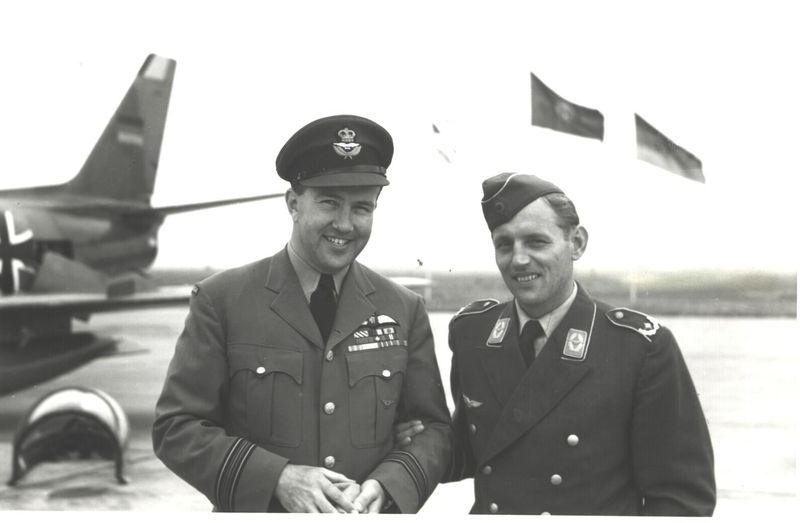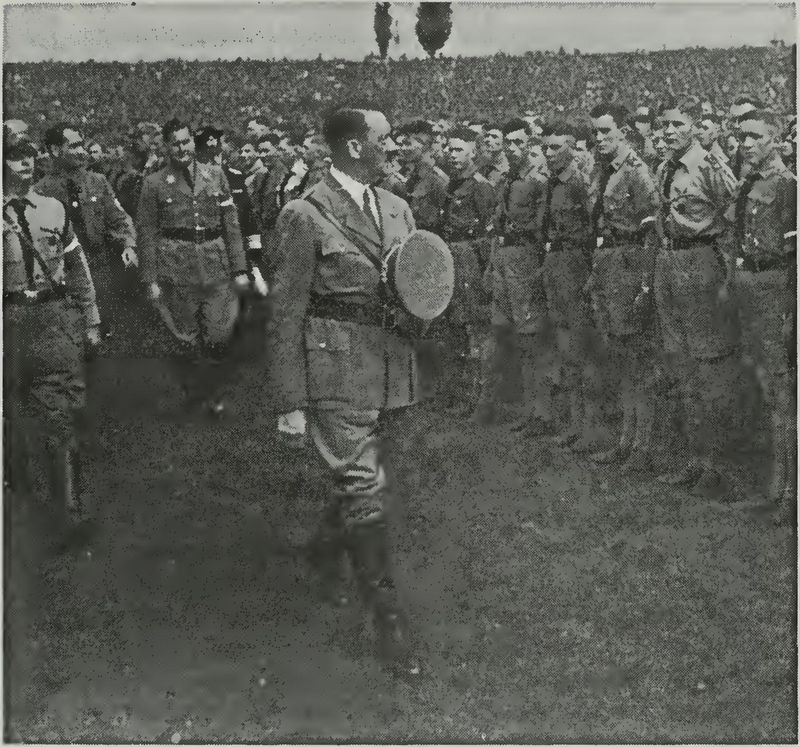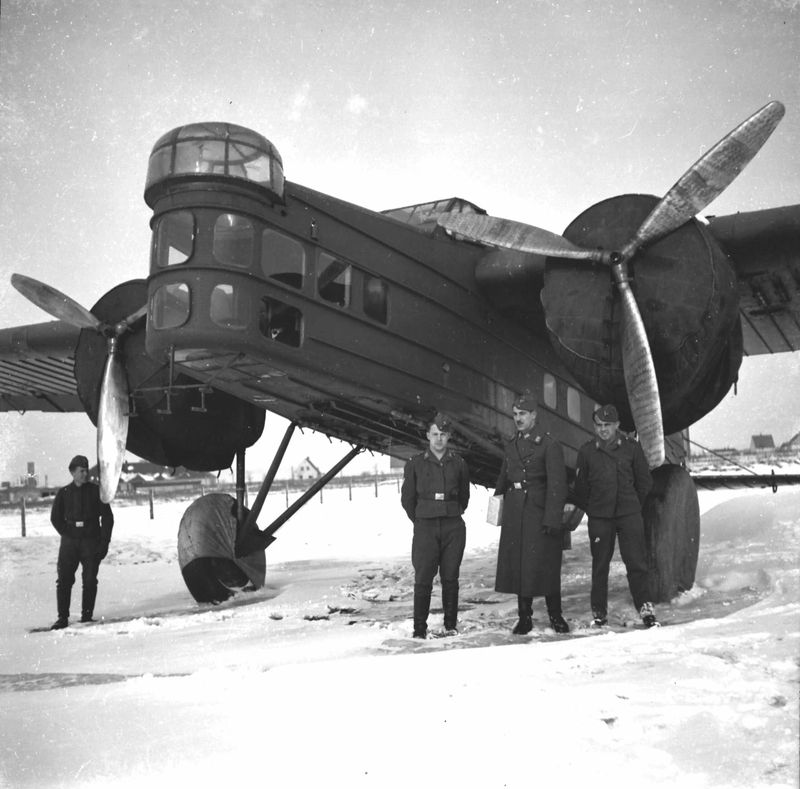Erich Hartmann, the highest-scoring fighter ace in the history of aerial warfare, faced unimaginable challenges beyond the battlefield.
After World War II, his life took a dramatic turn when he was handed over to the Soviet Union, where he endured the harsh conditions of the Gulag.
Despite facing false accusations, harsh imprisonment, and dire conditions, Hartmann’s resilience and spirit remained unbroken.
This blog post explores 14 pivotal points in his story, highlighting his incredible journey from a celebrated pilot to a prisoner and finally a symbol of unyielding human spirit and honor.
1. Top WWII Ace
Known as the “Blond Knight,” Erich Hartmann achieved an unparalleled record of 352 aerial victories during World War II, securing his place as the top ace in history.
With a keen eye and unmatched flying skills, Hartmann dominated the skies over Eastern Europe. His success was not just a result of his flying prowess but also due to his strategic thinking and leadership skills.
Despite the perilous conditions of war, Hartmann’s squadron admired him for his courage and quick decision-making. His legacy as a legendary pilot continues to inspire aviators worldwide.
2. Surrendered to Americans (1945)
In May 1945, as the war drew to a close, Hartmann made a strategic decision to surrender to the Americans, hoping for humane treatment.
Recognizing the imminent Soviet occupation, he believed that surrendering to the Americans would protect his men from the harsh reprisals anticipated under Soviet control.
His expectation of fair treatment quickly turned into a nightmare when he, along with his comrades, was handed over to the Soviet forces. This unexpected betrayal marked the beginning of a decade-long ordeal in harsh Soviet captivity, altering the course of his life forever.
3. Falsely Accused
Upon being captured, Hartmann faced grave charges of war crimes, accusations he vehemently denied. The Soviets accused him of various atrocities, which were fabricated to justify his imprisonment and extract confessions.
Despite the mounting pressure, Hartmann stood firm, refusing to admit guilt for crimes he did not commit. His integrity and courage were tested to the limit as he endured intense interrogations and the threat of execution.
His steadfastness in the face of such overwhelming adversity highlighted his unbreakable spirit and commitment to the truth.
4. Refused to Confess
Throughout his imprisonment, Hartmann was relentlessly pressured to confess to crimes he never committed. The Soviet authorities employed severe methods to break his spirit, including isolation, intimidation, and threats against his family.
Despite these harsh tactics, Hartmann’s resolve never wavered. His refusal to compromise his principles or falsely incriminate himself became a testament to his exceptional mental fortitude.
This defiance not only preserved his honor but also inspired fellow prisoners to endure their own trials with courage and dignity.
5. Gulag Sentence
After a sham trial, Hartmann was sentenced to 25 years of hard labor in the notorious Soviet Gulags. This sentence was part of a broader pattern of punishment meted out to German officers by the Soviets, often on trumped-up charges.
In the brutal environment of the Gulag, prisoners were subjected to inhumane conditions, forced into backbreaking labor, and deprived of basic human rights.
Hartmann’s ability to endure this harsh sentence without losing his sense of self speaks volumes about his inner strength and resilience.
6. Harsh Conditions
Life in the Soviet Gulags was a relentless battle against the elements and despair. Hartmann and his fellow inmates faced extreme cold, starvation, and frequent abuse from guards.
These harsh conditions were designed to break the spirits of prisoners and force compliance. Despite the dire circumstances, Hartmann’s leadership and resilience shone through.
He often shared his scant resources and offered words of encouragement to others. His ability to maintain hope and inspire solidarity among the prisoners became a beacon of light in the otherwise oppressive darkness.
7. Solitary & Transfers
Hartmann’s journey through the Gulag system was marked by frequent transfers and periods of solitary confinement. Each move meant adjusting to new, often more severe, conditions and further isolation from the outside world.
Despite these constant disruptions, Hartmann adapted and survived, refusing to let the oppressive system defeat him.
His ability to endure solitary confinement, a tactic designed to break even the strongest of wills, underscored his formidable mental resilience and capacity for hope in the bleakest of circumstances.
8. 10 Years Imprisoned
Hartmann spent over a decade in Soviet captivity, a period marked by relentless hardship and adversity. Despite enduring years of grueling labor and deprivation, he remained steadfast in his spirit and resilience.
His survival through this decade-long ordeal was not merely due to physical endurance but also his mental fortitude and unwavering belief in eventual freedom.
Hartmann’s ability to maintain his dignity and hope amidst such prolonged suffering stands as a testament to his incredible inner strength.
9. Mental Resilience
Hartmann’s mental resilience was a cornerstone of his survival in the Gulag. His ability to maintain a positive outlook and provide support to fellow inmates played a crucial role in enduring the harsh conditions.
He often shared stories of his flying days, offering a mental escape for those around him. His leadership and empathy helped foster a sense of camaraderie and hope, allowing many to endure the dehumanizing conditions with their spirits intact.
This mental strength was not just about personal survival but also about uplifting those around him.
10. Released in 1955
In 1955, after intense negotiations by West Germany, Hartmann was finally released from Soviet captivity. His return marked the end of a harrowing chapter in his life and the beginning of reintegration into a society that had changed significantly during his absence.
The homecoming was bittersweet, filled with both relief and the challenge of rebuilding a life disrupted by war and imprisonment.
Yet, his unyielding spirit and determination helped him navigate this transition, reconnecting with family and former comrades, and reclaiming his place in the world.
11. Hero’s Welcome
Hartmann’s return to West Germany was met with a hero’s welcome. The public and media hailed his survival and steadfastness, celebrating his unbreakable spirit.
His journey from a prisoner in the harsh Soviet Gulags to a free man was seen as a triumph of endurance and dignity. The recognition and respect he received upon his return offered validation for his suffering and determination.
It also reinforced his legacy as a symbol of resilience and honor, inspiring a nation recovering from the shadows of conflict.
12. Rejoined Air Force
Despite the years lost to imprisonment, Hartmann did not let that hinder his passion for aviation. Upon his release, he rejoined the newly formed West German Luftwaffe, helping to train a new generation of pilots.
His experience and insights were invaluable, particularly in embracing new technologies and methodologies. Hartmann’s return to aviation was not just about flying but about passing on knowledge and instilling discipline and dedication in young aviators.
His contribution to rebuilding the German Air Force solidified his position as a respected mentor and leader.
13. Outspoken & Principled
Throughout his life, Hartmann remained a vocal critic of both the Nazi regime and Soviet communism. His experiences gave him a unique perspective on the dangers of totalitarianism and the importance of preserving individual freedoms.
He frequently spoke out about the injustices he witnessed and endured, advocating for accountability and transparency in governance. Hartmann’s principled stance and willingness to speak truth to power earned him respect and admiration.
His advocacy highlighted the need for vigilance against tyranny and the importance of standing up for one’s beliefs.
14. Legacy of Honor
Erich Hartmann’s legacy is one of unparalleled skill and unyielding spirit. As the top ace of World War II, his combat achievements remain unmatched, yet it is his resilience and integrity that truly define his enduring impact.
Through adversity, Hartmann demonstrated unwavering courage and honor, inspiring generations of aviators and individuals worldwide.
His life story is a powerful reminder of the strength of the human spirit and the importance of standing up for one’s principles even in the face of overwhelming challenges. Hartmann remains a symbol of excellence and perseverance.
